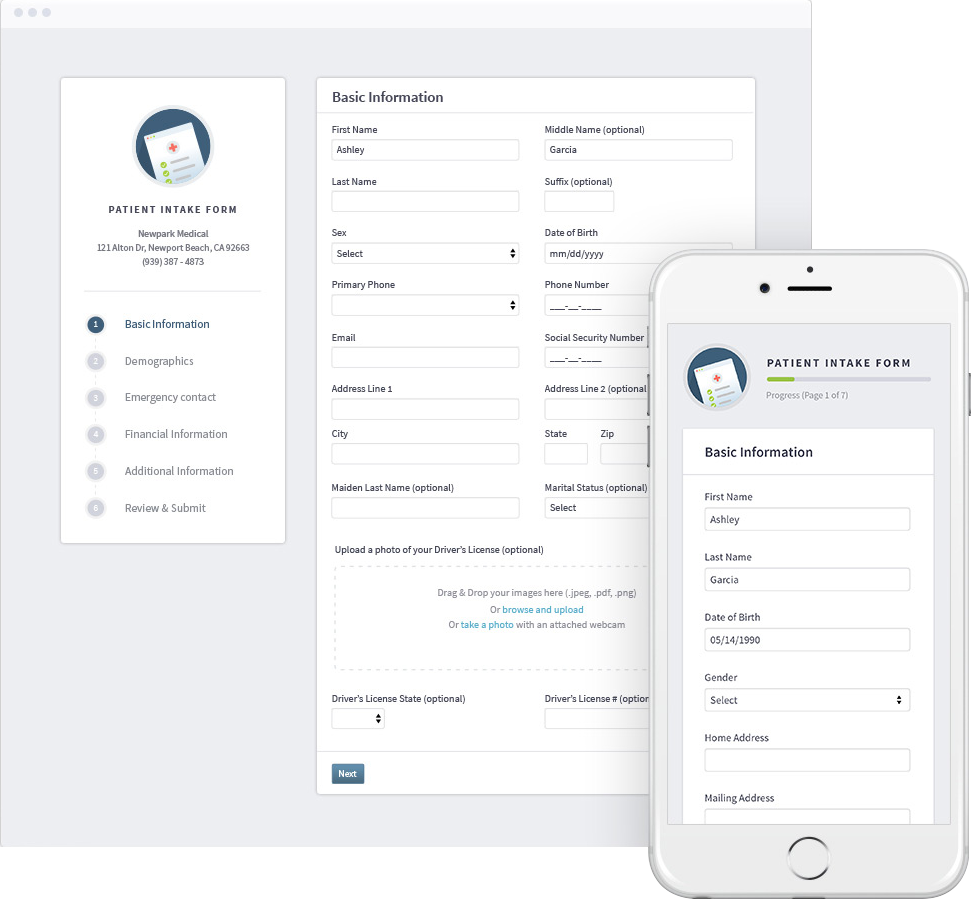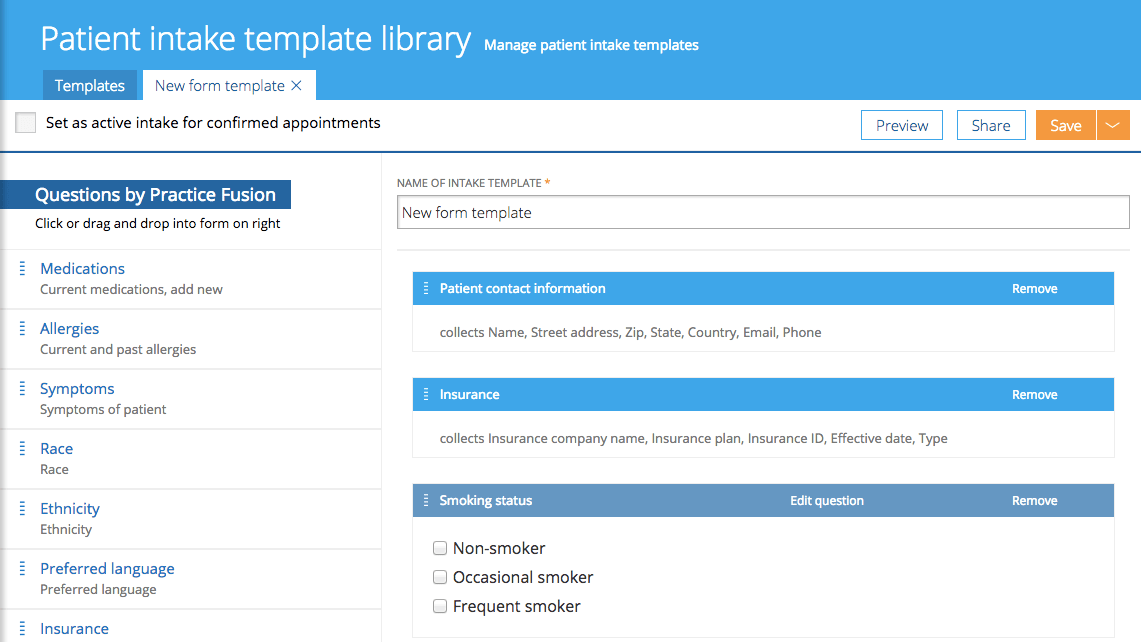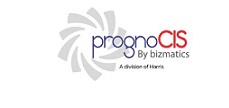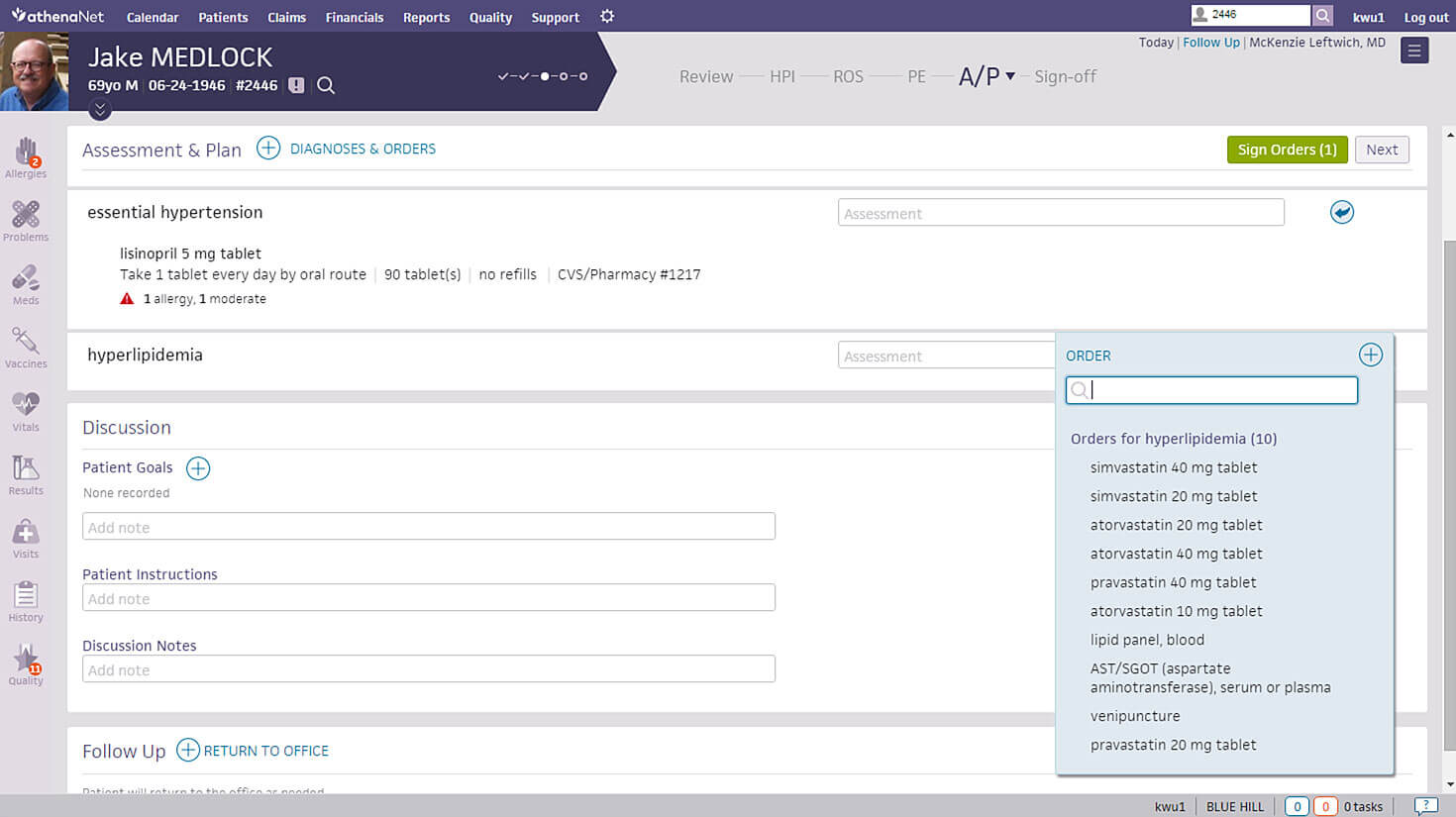What Is Patient Intake EHR Software?
Patient Intake EMR Software enables practices of all sizes to cut wait times and increase patient satisfaction. The EMR software integrated with HIPAA-compliant systems, allows patients to check in online from home rather than coming to the office to arrange an appointment. It also eliminates the need to fill out intake forms in waiting rooms or print intake forms from the website, fill them out, and bring them to the office at the time of the appointment.
Furthermore, manually filling out forms jeopardizes the work of healthcare practitioners. Problems such as unreadable handwriting might make working with insurance companies and verifying papers difficult. Checking in with Patient Intake EMR Software system saves time and allows the administrative team to swiftly verify all of the facts. Patients can enter all of their information online before arriving for their session. All details are processed fairly fast, which saves a lot of time.
Main Features Of Patient Intake Software
To have a good understanding of how the software works, it is advisable to learn about the different features and functionalities of the software. Before choosing a Patient Intake EMR Software solution, we should check if the software has the following key features:
Real-time Dashboard – Patient Intake EMR & PM software must have a dashboard that helps the administrative team view patient charts, profiles, billing processes, scheduling, etc., all in one place.
Online Digital Forms – There should be an efficient option available for patient intake forms so that they can fill them out and submit them before coming for their appointments, and so that all their details can be processed in advance.
Templates and Customization – Patient Intake Electronic Health Records (EMR) software must include built-in templates for intake forms, which can be viewed, edited, and customized according to the needs of the patients.
Feedback Forms – The EMR software should be able to gather patient feedback to help practitioners improve the practice and patient experience.
Reports – The top Patient Intake Software should be able to create charts from all the information taken through the feedback forms and surveys to present the data visually and to have a better understanding of it.
Insurance Validation – The software should be able to verify payments and benefits before patients arrive for their appointments with the physicians, so that no issues regarding payments are faced later.
Message Portal – To improve communication with the patients, there must be a secure and encrypted message portal that can address all the queries and give important reminders.
All the features mentioned above and some other common features like appointment reminders, demographics, document sharing, etc., must be a part of your Patient Intake Software.
What You Need To Know About EHR Software
Overview
Electronic Medical Records Software (EHR) represents the electronic method of storing medical records for patients. Using specially designed software, physicians and other medical professionals can store a wide range of information, from patient demographics to detailed clinical records, including medical history, social history, lab reports, and more.
EHR Software by Specialty
Since all medical providers (MDs, DOs, PAs, NPs, LCSW, OT, etc.) work distinctly based on their background and medical specialty, EMR Software or EHR Software must accommodate the unique style and documentation requirements. Examples of such specialty-specific features include the ability to annotate images and store before/after photos for Pain Management specialists and Dermatology specialists, respectively. Similarly, specialties such as Pediatrics, Oncology, Podiatry, Ophthalmology, Neurology, Nephrology, Dialysis Centers, Rheumatology, and Chiropractic Care require their unique set of specialty-specific features to simplify adoption.
Meaningful Use
Since the introduction of the HITECH Act, healthcare IT has undergone a massive transition, starting from the widely recognized Meaningful Use program to what is now known as MACRA, the Medicare EMR Incentive Program. The Meaningful Use program has transformed and now forms part of the four components of the new Merit-Based Incentive Payment System (MIPS), which is a fundamental part of MACRA.
For some medical practices, the transition from paper-based records to EMR Software (Electronic Medical Records Software) has not been a simple one. Regardless, realizing that the benefits of utilizing ONC-ATCB Certified EMR Software far outweigh the hassle and challenges associated with it, ensuring a viable future, most practices today have successfully transformed their clinical and administrative operations to EMR Software.
EMR Software Benefits
Aside from ensuring tangible financial incentives and profitability, practices converting to EMR / EHR Software have seen the following benefits:
- Improved practice efficiency
- Improved profitability and revenue cycle (Medical Billing Services)
- Patient Engagement (via Patient Portal)
- Decreased stationary costs
- Better Care Coordination
- Enhanced Security and Safety (Cloud Storage & Back-ups) – Cloud-based EMR Software
- Connectivity between doctors & hospitals across the country – Health Information Exchange (EMRs with HIE connectivity)
EMR Software Requirements By Practice Size
Just like a medical specialty, EMR Software requirements also depend on the size of the medical practice. From solo-provider clinics to large multi-provider, multi-specialty clinics, every practice has unique inherent challenges that must be addressed by the EMR Software vendor.
Small or Solo Provider Practices
A small doctor’s office not only has a limited number of staff members, but its EHR Software budgets are also meager compared to a large enterprise such as a hospital. Due to these budgetary constraints, many providers simply employ Free EMR Software or choose an affordable EHR Software vendor with a low fixed monthly fee. Cloud-based access is one such important requirement so that these providers can access patient charts even from home when needed.
Medium-Sized Practices
These practices usually consist of 5 to 10 medical providers, often belonging to the same medical specialty. Their requirements are more stringent, and their budget is also considerably larger. Aside from specialty-focused requirements (EHR Software by Specialty), these practices also require unique features such as interoperability, dedicated customer support, multi-device support, and an extensive reporting functionality to keep an eye on the overall performance of the practice.
Large Practices
Larger group practices generally comprise more than fifteen or, often, twenty medical providers. These practices usually provide medical services that fall under various medical specialties (Orthopedics, Pain Management, Surgery, Chiropractic Medicine, Family Medicine, etc.). Therefore, these practices require support for multiple users to access the system simultaneously and for the Scheduling software to accommodate multiple locations, providers, and resources, such as dialysis chairs and procedure room allocation. These practices also keep replacing or adding staff members, and need a scalable solution.
Hospitals or Enterprise Organizations
EHR software companies such as Epic, Cerner, AllScripts, NextGen, Athenahealth, IMS by Meditab, eClinicalWorks, Meditech, McKesson, MEDHOST, etc. usually target and provide solutions for larger corporations such as Hospitals, ACOs, PCMH, IPAs, CINs (Clinically Integrated Networks), Public Health Departments, etc.
These customers have the most elaborate list of requirements, which are usually documented in an RFI or RFP to assess and shortlist vendors that can meet them. The requirements consist of features like inventory management modules, interface with local labs (LIS), machines, and diagnostic equipment, along with drug dispensing (pharmacy management software) and electronic medication administration records (EMAR), etc.
These entities also require the EMR software to integrate with multiple other software and medical devices.
Why Medical Practices Need EMR Software?
Since the introduction of Meaningful Use, most healthcare practices have little or no choice but to convert their practice operations to EHR software. However, most providers today select the EHR software of their choice that best suits their specific needs and must perform an extensive search to evaluate all available options before they find one that is suitable. Most potential EMR Software buyers in the market today have the following in common:
- Do not know what they are looking for
- Know exactly what they want, but don’t know where to start or how to find it
- Relying on advice from colleagues using EMR software already
Although #3 is ideal, every provider and practice workflow is unique, and therefore, what works for one provider may not suit another. “One size fits all” simply doesn’t apply in the world of healthcare IT. Software experts and industry specialists are an ideal source of information and advice, and ultimately ensure that the right decision is made.
What To Look For In A Potential EMR Software?
EMR software includes several types of software based on specific applications or functionalities:
Cloud-Based EMR Software
Small doctor offices benefit the most from Cloud-based EMR Software technology since minimal to no upfront cost or maintenance is required, and accessing the EHR Software is possible from any location, given the availability of internet access. This type of EMR software is also device-independent in most cases and can be accessed using devices such as Smartphones (Android & iOS), iPhones, iPads, laptops, and desktop computers. The move to the public cloud for healthcare is vital in the current changing landscape. For practices that don’t adopt new cloud services, the old inferior feature set, coupled with the higher prices, will hinder the business dramatically. This gulf between the old software and the new cloud-based software will only grow exponentially as time goes on.
Mac EMR Software
Apple dominates the digital device and computer market in the US today, so it is no surprise that many providers are specifically looking for their EHR Software vendor to support the Mac operating system (Mac EMR Software). Not all Vendors today support Mac devices, so finding a vendor with native support for Mac devices is essential to ensure that the software performs optimally on existing hardware at the practice and does not require additional investment in computer systems.
ONC-ATCB Certified EMR Software Vendors
This is the most significant requirement for most software buyers today as the software must comply with the standards and guidelines set by the Office of the National Coordinator (ONC). The online repository details all software vendors and details related to their respective compliance with the measures set by the ONC-ATCB (Click here). Software that complies with these standards has undergone rigorous testing and is confirmed at a benchmark level defined by the federal body. The software testing done during this exercise checks all areas of the EMR Software system, from Patient Portal access to the way the EHR Software communicates with other programs and entities like labs, Pharmacies (via e-Rx), hospitals, HIEs, etc.
Patient Intake EHR Software
Electronic Medical Records (EMR) software for certain specialties, such as Cardiology and Vascular Surgery, must provide unique tools to document the clinical workflow of those specialists, such as specifying the area of concern. Pain Management specialists, for example, must be able to specify joint pain through a method more than mere capture of text data.
Integrated Practice Management Software
With competition rising in healthcare IT, EMR software providing integrated Practice Management software (PM software) as part of their overall software package easily outperforms rivals with standalone EHR Software, including those that may provide specialty-specific EHR software. EMR Software companies with integrated Practice Management solutions often tend to provide extensive reporting capabilities to track practice performance and manage business operations better.
Integrated Medical Billing Software
Medical practices require software systems to streamline operations across the board. One such important area is billing for services rendered and communications with insurance companies. Medical Billing Software, therefore, works best when integrated with Electronic Health Records (EHR) software. All clinical documentation seamlessly conforms to the required standard and forms a financial document that can be electronically sent to payers (insurance carriers) to verify and process at their end. This simplifies the operations and ensures all parties are on the same page when it comes to the financial health of the enterprise. Medical billing software helps practices and medical billing managers generate claims and patient statements, verify patient eligibility, and more. This software is ideal for practices that want to handle billing in-house and can integrate with EMRs.
Security
An EMR Software must ensure the security and safety of patient records while ensuring privacy and HIPAA compliance for patient/doctor communication (Patient Portal). This is a paramount concern for physicians and HIPAA compliance should be guaranteed at all times by the EHR Software Vendor. Most EMR vendors today (Epic, Cerner, Athenahealth, AdvancedMD, PrognoCIS, Modernizing Medicine, eClinicalWorks, etc.) are aware of the importance of HIPAA compliance and have taken steps to ensure the safety of patient records security in every section of the EHR Software using advanced tools like data encryption technologies to enhance the security of the EMR software.

Kareo Clinical EMR Software
Specific Services
One of the decisions your practice will have to make is whether you want just an EMR software or one with an integrated Practice Management (PM) software and Medical Billing software. There are advantages to having both together, but there have been cases where some practices only go for one if they had unique requirements that a vendor could not fulfill, or they had already paid a hefty amount for a PM software and weren’t looking to replace it yet.
Ease of Use and Training
Doctors are not IT professionals, and though some might be tech-savvy, it would be egregious to expect them all to be experts on EHR software. Ease of use is essential to make the transition from paper to electronic smooth, as well as the day-to-day practice to go along without a hitch. If the software is too complicated and hard to understand, it’s a waste of precious time and needlessly aggravating. Some vendors offer free training, while others don’t; make sure you ask for training if your practice needs it.
Specialty Specific
Not all specialties are created equal, so why must their software be generic? Basic EHR software works well and is good for general practice and most specialties, but doctors have complained about specialty-specific specific not being available in the market. The specialty software has inbuilt recording systems that make specialty practices function efficiently. Only a few vendors provide specialty-specific software, so there aren’t many to choose from. But more vendors are cottoning on to the demand, and there should be more options shortly.
Support
Support is a major issue most practices have with their current vendors. A good support team can make small glitches to major roadblocks easy to maneuver, while a bad one will just make things worse. Some EHR software vendors provide support as part of the plan you’re already paying for, while others charge extra for support. Scout the market, read reviews, or just ask point-blank if there will be a special support team assigned to each practitioner and whether you’ll be charged for the service.
Hidden Cost
There are varying price lists out there; some offer free services, while others charge an arm and a leg for specialty services. Either way, there will be hidden costs that you might get to know about later. Fix your budget and talk to the EMR Software vendors you interview about hidden costs within the contract and whether services such as training and support are free.
Mobility
Smartphones have changed the dynamics of mobile usage. Handheld devices are easy to carry around and can be used for a number of uses. Most people are ditching the cumbersome PC for a handheld device. Doctors and healthcare practitioners mostly use iPads or Tablets in the examination room to take down patient symptoms, check the history, and note down the prescription, so the vendor must have a mobile application that is synced with all the mobile devices being used in the practice.

Practice Fusion EMR Software
Market Trends to Be Aware Of
Like anything else, the EMR software industry is also subject to constant changes. From new technology to legalities and governing bodies, everything is constantly changing. Here are some of the changes I think it would do well for you to keep track of.
Meaningful Use Changes
At a healthcare conference Andy Slavitt, the administrator of the Centers for Medicare & Medicaid Services declared that Meaningful Use was over. Since then Meaningful Use has been renamed Promoting Interoperability, along with new updates to its principles.
The program has been overhauled, with the CMS (Centers for Medicare and Medicaid Services) dedicating the program to the exchange of health information and patient data as well as encouraging medical professionals to implement Certified Electronic Health Records (EHR) technology.
Cloud-Based Services
It’s no surprise that more vendors are switching to Cloud-Based EMR software. Cloud-based EHR software can cut down on steep upfront costs that otherwise would be spent on client servers, and they can even be hosted from any device with an internet connection and web browser, making them a much more convenient option. Research has found that only 25% of practitioners are interested in a web-based EMR system, while 50% are willing to have it as an initial model that eventually transitions to cloud-based.
Accessibility
The EHR software industry is quickly widening its range of practice types to become accessible to a wider range of healthcare services. The number of people who lack the time and knowledge in health IT is increasing each year. This makes optimizing these EMR software solutions more difficult as they must now cater to different needs. Douglas W. Bowerman, MD, predicts we will see a “continued trend towards accessibility” in Electronic Health Records software, both in terms of how we access them – on mobile, for instance – and who can access the EHR software.
Patient-Centric Engagement
The growth of your practice can be greatly benefited by boosting patient engagement. One approach can be to make resources and content readily available within patient communities. Another can be to increase patient outreach. Additionally, regular appointment reminders (which can be handled via Appointment Reminder EMR software) can reduce cancellations and improve patient engagement.
Better Patient Access
While better patient access is expected of many EHR software systems, the feature has not been completely integrated yet. According to a study in 2019, only 10% of patients (who had access to their records) viewed them. Additionally, of these patients, 63% were encouraged to do so by their respective providers. Electronic Medical Records software (EMR software) vendors are updating their systems to be easier to navigate and to better suit patients’ requirements; this also prepares EMR systems for potential future regulatory changes. More health practices are also providing more guidance and raising awareness to encourage more patients to regularly check their health records before appointments.
EHR Footprint
Electronic Health Records software systems must be inclusive of a wide range of digital capabilities. By working towards better data liquidity, data would be more accessible and therefore increase the EHR footprint, which can be done without compromising on security. Additionally, implementing interoperable electronic health record systems (EHR systems) would also allow better access and exchange of patient information between healthcare organizations.
Widespread Interoperability
There’s a lack of data-sharing standards across EMR software systems, which stops patient information from being shared across different practices. This can lead to problems in diagnosis (for patients who visit various centers) and even for the patients themselves. To solve this, EHR software vendors are adding more updates to their software to make Electronic Medical Records software more interoperable. And to include more integrations to allow such data to be shared more efficiently.
Patient Portal
There are many benefits to a patient portal EMR system. They eliminate the need for paperwork and manual data retrieval, and they provide a direct portal for patients to view their medical records. By allowing easy access to their records, patient portals also encourage patients to be more involved in their healthcare, which enables medical practitioners to make easier diagnoses.
Artificial Intelligence
Artificial intelligence and machine learning have both had major impacts on health IT in recent years. It is likely that as these continue to evolve and change, they will have just as big an impact on EMR software systems. AI and machine learning algorithms can improve Electronic Health Records software by making it more intuitive and efficient, and they can help streamline medical workflows and improve patient outcomes. Applying these technologies to EHR software systems can also enable physicians to provide much more personalized and proactive care by identifying any potential health issues early through analysis of patient data. By providing access and insights into large amounts of patient data, artificial intelligence, and machine learning algorithms have the potential to revolutionize clinical research and drug development.
Cybersecurity
As we progress into 2025, cybersecurity in Electronic Medical Record (EMR) systems is set to become increasingly sophisticated in response to rising cyber threats. Key developments will include advanced encryption and the use of blockchain for enhanced data integrity. Artificial Intelligence (AI) will be crucial for real-time threat detection and predictive analytics, and compliance with global data protection regulations will become more critical, necessitating adaptive strategies from EHR software providers. Additionally, user training will gain prominence to mitigate risks associated with human error. Overall, the focus will shift towards building a proactive, resilient digital healthcare environment, fortified against emerging cyber challenges.
Enhanced Data Security and Privacy
As we navigate deeper into the digital era, enhancing data security and privacy within healthcare systems, particularly in Electronic Medical Record (EMR) platforms, has emerged as a paramount concern. The surge in digital health data necessitates robust security measures to protect sensitive patient information from cyber threats and breaches. Innovations in encryption technologies and the adoption of blockchain are pivotal in fortifying EMR systems against unauthorized access, ensuring that patient records are both secure and tamper-proof. Furthermore, stringent adherence to data protection regulations, such as HIPAA in the United States, reinforces the legal framework for privacy and security. Educating healthcare professionals on best practices for data handling and implementing advanced user authentication mechanisms are critical steps in mitigating risks. As healthcare continues to embrace technology, prioritizing data security and privacy will be essential in maintaining patient trust and upholding the integrity of healthcare delivery.
Latest in Patient Intake EMR Software
As of 2023, Patient Intake EMR Software has undergone significant advancements, driven by the need to streamline administrative processes, enhance patient experience, and improve data accuracy in healthcare settings. The 21st Century Cures Act (2020) and the ONC Final Rule (2020) played a pivotal role in shaping this evolution by emphasizing interoperability and patient access to health data. These regulations encouraged EMR vendors to develop patient intake solutions that seamlessly integrate with existing systems, enabling real-time data capture and reducing manual entry errors.
The COVID-19 pandemic, which began in 2020, accelerated the adoption of digital patient intake tools as healthcare providers sought to minimize physical contact and reduce wait times. In 2021, companies like Phreesia and Experian Health introduced advanced intake solutions with features such as online pre-registration, digital forms, and identity verification. These tools allow patients to complete intake processes remotely, including updating medical histories, insurance information, and consent forms, which were automatically synced with the provider’s EMR software.
In 2022, patient intake EMR software began incorporating AI-driven capabilities, such as predictive analytics for identifying potential insurance issues or patient no-shows. For example, Epic Systems and Cerner enhanced their intake modules with AI-powered tools that pre-fill forms using historical patient data, reducing redundancy and improving efficiency. Mobile-friendly designs and multilingual support became standard, ensuring accessibility for diverse patient populations.
By 2024, patient intake EHR software had evolved to include features like wearable device integration, allowing patients to upload health metrics directly into their records before appointments.
Cloud-based solutions also gained traction, offering scalability and remote management for multi-location practices. These advancements reflect a broader trend toward patient-centered care, with intake software enhancing efficiency, accuracy, and the overall patient experience.














